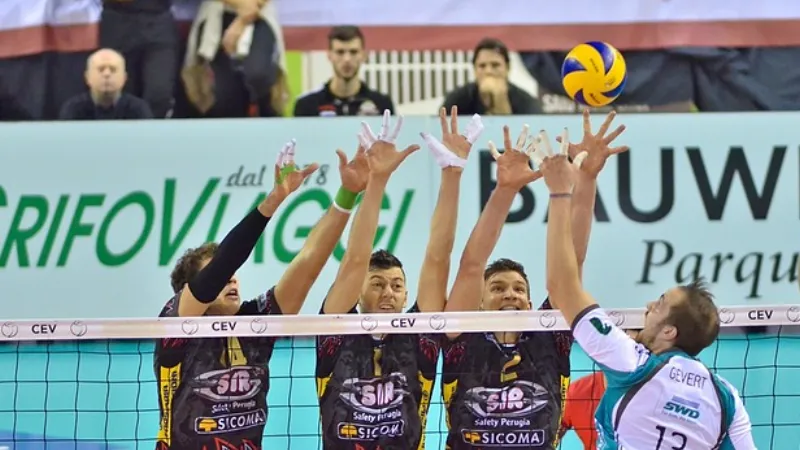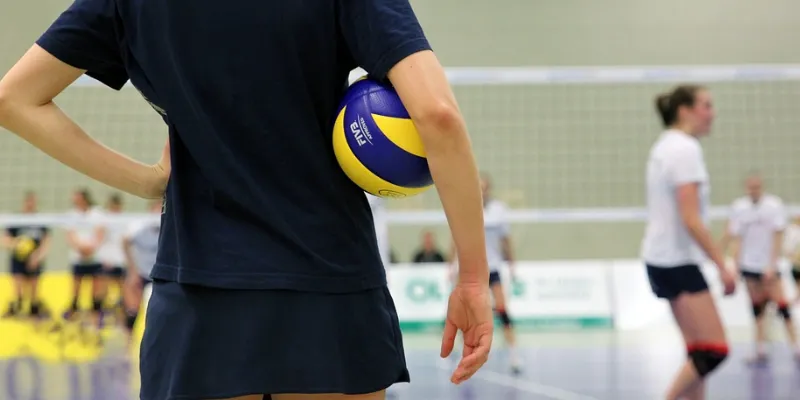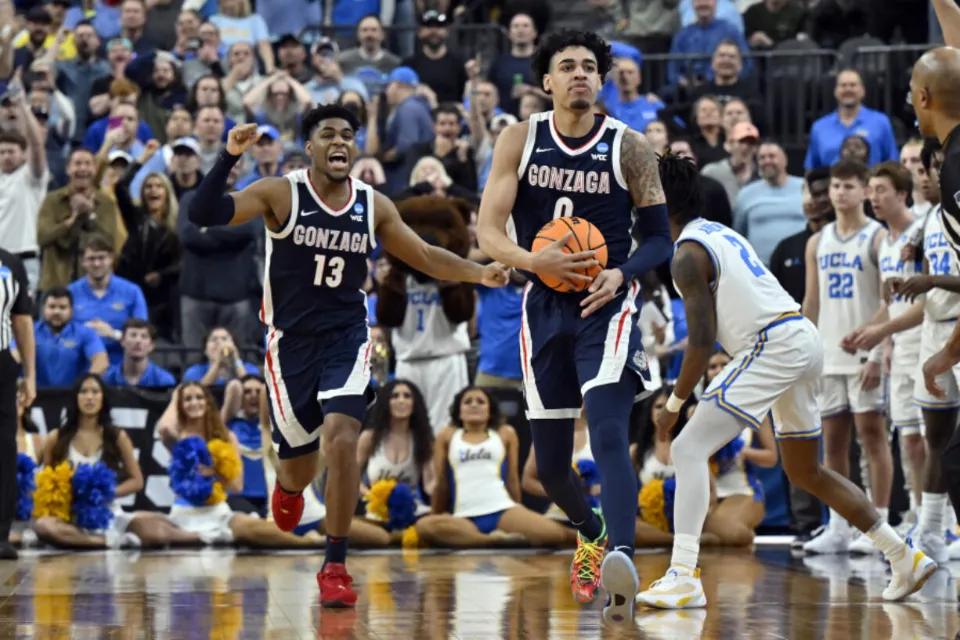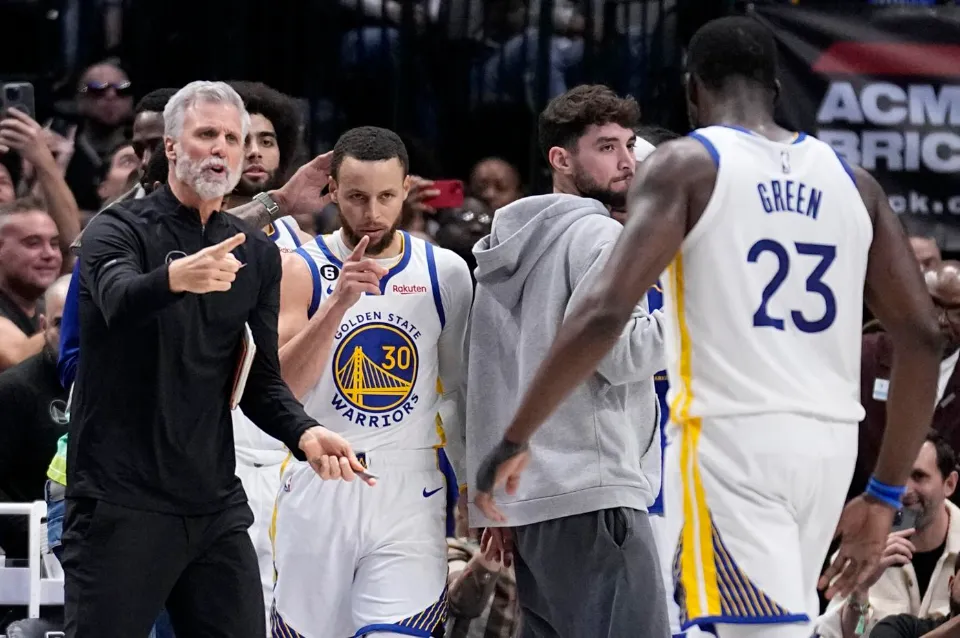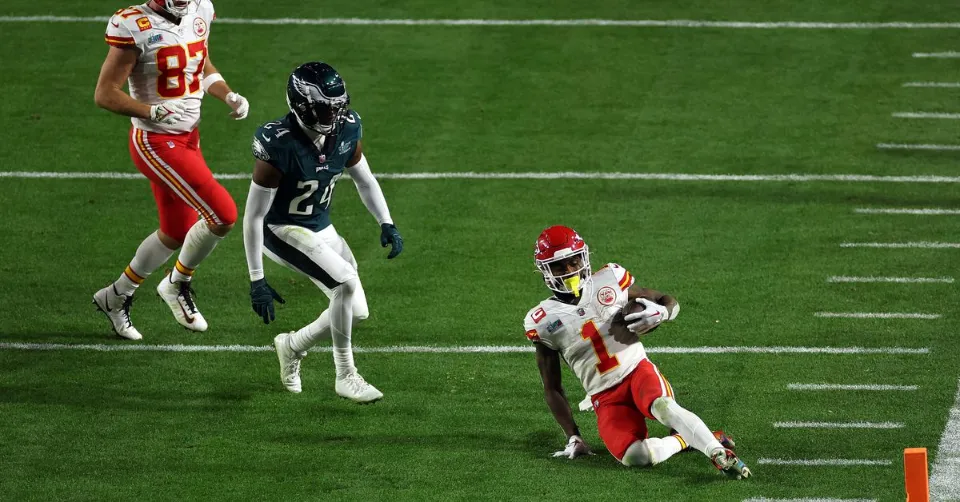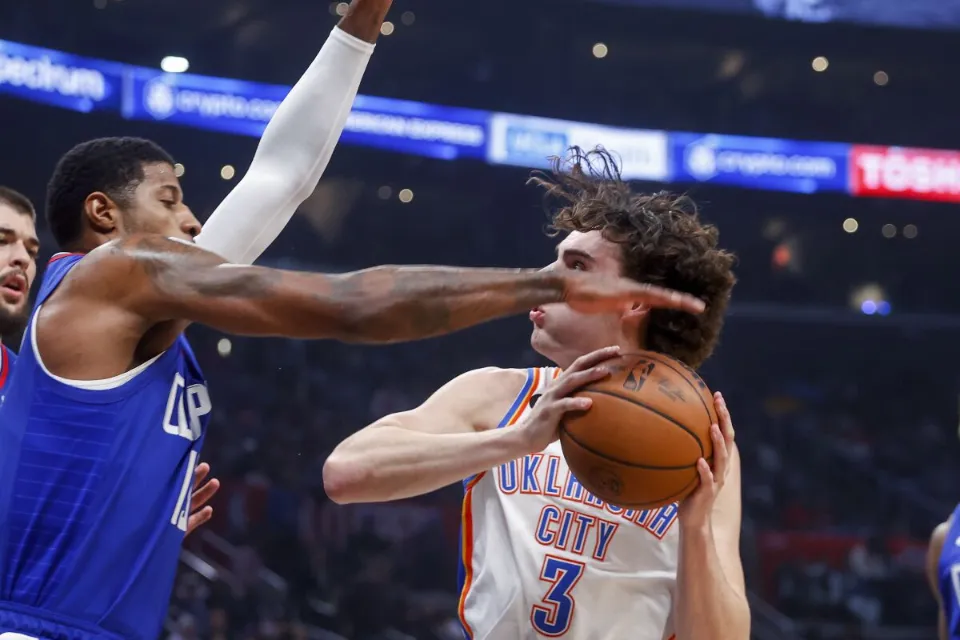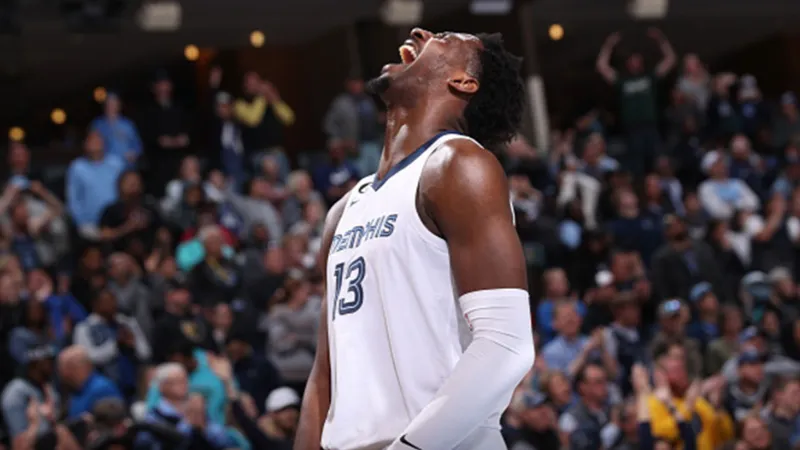What Is Top Of The Key In Basketball: Basic Knowledge
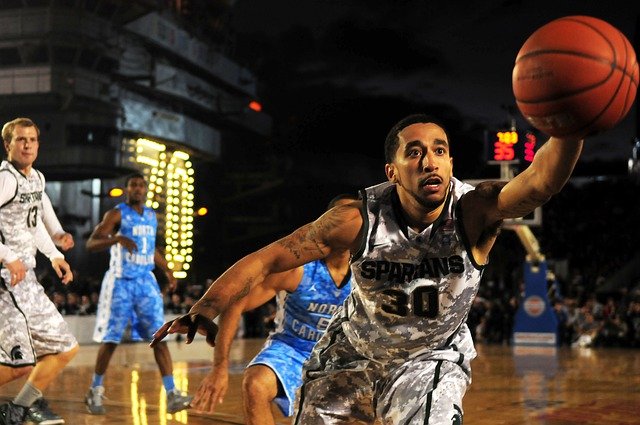
The top of the key in basketball often appears during games. The space between the free-throw line and the hoop is typically marked by a painted rectangle. The apex of the arch line at the free-throw line is the top of the key, and this rectangular area is the key. The top point in the 2-point shooting region is the top of the key.
Learn about that area of the court because we will explore some fascinating details about one of the most well-known areas on the floor and analyze how it affects the game of basketball.
What makes the top of the key so special, then? Should offensive basketball players frequently shoot from that area? How large is the key’s circle? Here is a detailed explanation of how to play the basketball top of the key.
Table of Contents
Top Of The Key History
The six-foot-wide lane was a mainstay of the game until the way it was played started to limit the size of the key.
The sport started to be dominated by centers, most notably George Mikan, the first dominant big man in the sport. They were filling the lane and scoring massive points on the court.
As a result, the league increased the width of the key from 6 to 12 feet before the 1951–1952 season. The NBA increased the width of the key from 12 to 16 feet just thirteen seasons later. The NBA needed a change because big men like Wilt Chamberlain and Bill Russell were once again dominating it.
Other Names For Top Of The Key
- NBA: “Free throw lane”
- “Foul lane”
- “The lane”
- “The paint”
- “16-foot lane”
- FIBA: “restricted area”
However, the NBA has referred to the “restricted area” as the area designated by a semicircle underneath the basket where offensive fouls cannot be taken. This “restricted area arc” is found 4 ft (1.2 m) from the hoop for the NBA and NCAA.
For FIBA, it is known as the “no-charge semicircle” 4.1 ft (1.2 m) from the basket. This semicircle is a recent invention that debuted in the NBA for the 1997–98 season as well as in NCAA men’s basketball for the 2010–2011 season.
The FIBA Key: 1956-2010
The International Basketball Federation may have used the strangest key (FIBA due to the French translation Federation Internationale de Basketball). The national organization that oversees basketball internationally is called FIBA. They also plan basketball competitions for both the men’s and women’s Olympics.
The lane was very wide toward the basket because the FIBA key, which was in the shape of a trapezoid from 1956 to 2010, was in that shape.
In 2010, FIBA made the decision to modernize its key and started using the rectangle with a small wrinkle. The top of the key is included in the free throw circle, which is larger than the lane but does not neatly divide it from it.
Key Area On A Basketball Court
The area under the basket to the free-throw line is crucial on a basketball court. The painted court surface on most courts is coordinated with the team’s colors. The area is 16 feet long and 15 feet broad for the NBA and WNBA. The key in NCAA college basketball measures 12 feet across.
Size And Shape Of The Key
The key’s size and shape are now determined by the game’s level of difficulty. The key used by the NCAA and National Association of Intercollegiate Athletics (NAIA) is rectangular and sixteen feet wide, while the key used by the NBA is only twelve feet wide. Prior to 2010, when FIBA adopted a sixteen-foot-wide, rectangular shape, FIBA keys were trapezoidal in shape.
Basketball Functions Of Top Of The Key
Frequently, offensive plays begin from the top of the key. The top of the key is where many will call and start their plays when a team’s point guard moves the ball up the court.
Because it is in the middle of the court, the top of the key is a wonderful position to start an offensive play because it better “balances” the court. Having an equal number of attacking players on each side of the court is referred to as balancing the court (usually two on each side with the PG in the middle).
Due to the space, you have from that area of the court, entry passes are also made simpler from the top of the key.
Consider directing a play while you are alone on the court in a corner without any teammates nearby. Due to the lack of spacing, it would be challenging to throw them the ball and equally challenging for them to elude their defender in order to grab the entry pass. Read about: How To Get Open In Basketball?
Half-Court/Pickup Games
Every possession in a pickup and/or half-court game begins at the top of the key. The game begins with the offense and defense “checking ball,” or passing the ball back and forth to each other to signal the beginning of the possession, as there is no tip-off during pickup.
If your team receives a rebound after the opposing team misses (as long as the ball touches the hoop), you must return the ball to the top of the key before starting your offensive move during half-court games (usually two on each side with the PG in the middle).
There are some disadvantages to utilizing the top of the key too much during today’s NBA. A big push advance stats and analytics in the game have shown that top-of-the-key shots aren’t the most statistically successful.
In today’s NBA, there are certain downsides to overusing the top of the key. Top-of-the-key shots aren’t the most statistically successful in the game, according to a large push of advanced metrics and analytics.
Since a corner three-pointer is really closer to the basket than one from the top of the key, many teams make an effort to acquire shots from that area of the court rather than the top of the key.
Of course, there are still a lot of shots that can be taken from the top of the key (hello, pull-up threes!). However, neither statistically nor strategically are those shots the most desired.
For a variety of reasons, the top of the key is significant on the basketball court.
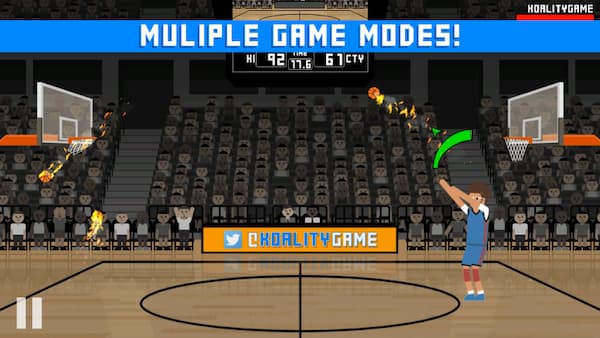
Initiate Offense
Frequently, offensive plays are started from the top of the key. The top of the key is where many will call and start their plays when a team’s point guard moves the ball up the court.
Because it is in the middle of the court, the top of the key is a wonderful position to start an offensive play because it better “balances” the court. Having an equal number of attacking players on each side of the court is referred to as balancing the court (usually two on each side with the PG in the middle).
Due to the space, you have from that area of the court, entry passes are also made simpler from the top of the key.
Consider directing a play while you are alone on the court in a corner without any teammates nearby. Due to the lack of spacing, it would be challenging to throw them the ball and equally challenging for them to elude their defender in order to grab the entry pass.
The top of the key is important on the basketball court for a number of reasons.
Half-Court/Pickup Games
Every possession in a pickup and/or half-court game begins at the top of the key. The game begins with the offense and defense “checking ball,” or passing the ball back and forth to each other to signal the beginning of the possession, as there is no tip-off during pickup.
If your team receives a rebound after the opposing team misses (as long as the ball touches the hoop), you must return the ball to the top of the key before starting your offensive play.
In today’s NBA, there are certain drawbacks to overusing the top of the key. Top-of-the-key shots aren’t the most statistically successful in the game, according to a large push of advanced metrics and analytics.
Since a corner three-pointer is really closer to the basket than one from the top of the key, many teams make an effort to acquire shots from that area of the court rather than the top of the key.
Of course, there are still a lot of shots that can be taken from the top of the key (hello, pull-up threes!). However, neither statistically nor strategically are those shots the most desired.
Offense/Defense Information about Top Of The Key
Both offensive and defensive players need to be aware that if they remain in the paint for more than three seconds, they may be in violation of the rules. Infractions of 3 seconds against the offensive team result in loss of ball possession. A three-second defense violation allows the offensive team to go to the free-throw line and attempt a shot.
You must consistently exit that free throw lane after two seconds to avoid receiving a 3-second rule foul and risk a penalty call. When they quickly enter the key to receive the ball and shoot at the hoop, it is better to run an offensive play, typically with the point guard passing to the center.
Anytime your defender enters the paint, you should stay with them to defend and stop any easy shots to the basket. To avoid getting the penalty for your team, one tip is to take a half step behind them as they enter the key. Also read: What Is Guarding In Basketball
What Does It Mean To Be On Top Of The Key In The NBA?
There is some terminology ambiguity to clear up. The free throw circle is, in fact, part of the key. Over time, the term “key” has become a colloquial term for the painted rectangular area that runs from the baseline to the free-throw line and is either 12″ (college) or 16″ (pro) wide (FIBA’s key is wider at the base and tapers to 16″ at the free-throw line). Players on the offensive side are only allowed to occupy this space (also known as the lane or the paint) for no more than three seconds without the ball unless a shot has already been made. There is also a defensive 3-second rule in the NBA, but that is a different topic.
The region at the top of the free-throw circle that is furthest from the basket is what is meant by the phrase “top of the key” according to its original meaning. It’s not a set spot, but rather a region beginning about 21 prime from the basket (the free throw circle has a 6 prime radius). It can extend up to 3–4′ away from the basket and 3–4′ wide, so the definition is a little hazy.
To position players and designate areas for setting picks, taking shots, etc., coaches use spots like the top of the key, the block, the elbow, and the short corner. They are not precise spots, but rather small spatial locations on the court.
Is Shooting From The Top Of The Key A Good Idea For Basketball Players?
It’s not a smart idea to take shots from the key once the three-point line was introduced to the NBA in the 1979–1980 season. For instance, making a three-pointer from the corner next to the sideline is closer than shooting from the top of the key. 22 feet separates a corner three-pointer from the basket from a top-of-the-key shot, which is 23.75 feet away. The top of the key is 22 feet from the basket in FIBA and NCAA basketball games, which is a little closer than the NBA.
You should reduce the number of shots you attempt from the top of the key because they are closer and worth one more point when made from a three-point corner. In addition, it is 23.9 inches away from the top of the key to the three-point line. Basketball players should therefore take an additional step back and shoot the ball since it is closer to the hoop and has a higher value. Read more: What Is ISO In Basketball?
Is The Top Of Key Important for Pickup Basketball Games?
When playing pickup basketball, the top of the key is crucial. The top of the key serves as the obvious baseline for one side to assume control of the offense because most pickup games are played on a half-court. Usually, the defensive team that successfully rebounds the ball off the rim or backboard must dribble back to the key to create a clear and initiate the offensive play.
You don’t have to worry about the other team getting the ball at the top of the key if you are playing pickup basketball on a full court. The only clear required on a full court is to pass the half-court line.
See more about Basketball Lines On Ball
What Is a 3-Second Violation?
A basketball player that stays within the key for longer than three seconds is given a three-second infraction, commonly referred to as a “lane violation” or “three in the key.” The three-second rule comes in two variations:
1. A three-second defensive rule infringement. Defensive three-second violations, often known as unlawful defense, are team technical fouls assessed when a defensive player stays in the key for more than three seconds without defending an opponent. According to the NBA rulebook, as a result of this foul, the offense is awarded a free throw and control of the ball. Running a zone defense, which is a defensive tactic that assigns defensive players to defend particular regions of the court, is challenging due to the defensive three-second limit. FIBA and high school basketball matches are exempt from the defensive three-second rule.
2. A three-second offensive violation. The defensive variant is comparable to the offensive three-second violation. This violation is committed by an offensive player when they remain in the key while their team has possession of the ball, fail to hit a shot, pass the ball, or dribble outside of the lane. The offensive three-second violation’s main goal is to stop offensive players from loitering close to the low post while the shot clock is running because doing so would open up endless opportunities for rebounds, blocks, and layup attempts.
FAQs
What Percent Of The Basketball Court’s Top Of The Key Are There?
In basketball, the back court and the front court each have two top keys.
The ball is inbounds when the defender hands it off to the offense, marking the start of the play.
In The NBA And WNBA, How Large Is The Top Of The Key?
In the NBA and WNBA, the semi-circle is 6 feet high at the top of the key.
How Big Is The NCAA College Basketball Top Of The Key?
In NCAA college basketball, the semi-circle is 6 feet high at the top of the key.
See also: How Does the NCAA Baseball Tournament Work?
Special Of Top of the Key In Basketball
The basketball court’s free throw circle is at the top of the key. A player enters this circle when they must attempt a free throw and must keep both feet inside the foul line while shooting.
Get How Many Points For Making A Shot At the Top Of The Key?
Since the top of the key is in front of the three-point line, any shot that a basketball player makes is worth two points. However, if the ball handler gets fouled after taking a shot and gets the ball in, they get to shoot one additional free throw. That means that taking a shot from the top of the key could be worth three points in total, but it will require a defensive foul.
Why Is It Referred To As The Top Of The Key?
The first version of the key appeared in 1936 as a small rectangular shape on the basketball court. The court appeared to have a keyhole on each side due to how much larger the semicircle appeared in comparison.
Conclusion
The top of the key is one of the most popular places on a basketball court for good reason. Not only does it have a catchy nickname, but offenses are run effectively from this place as well.
While the key and its multiple parts have been changed throughout basketball history it still remains a part of the game in almost every aspect imaginable.
Also read:

